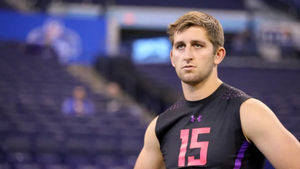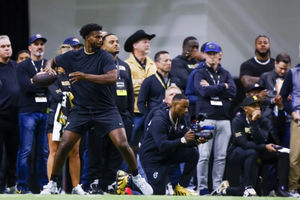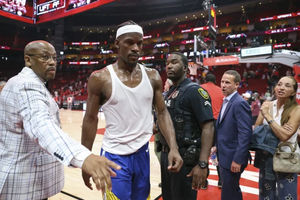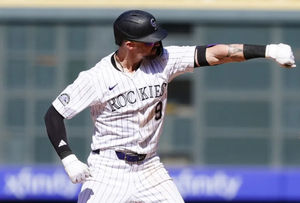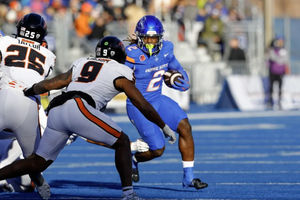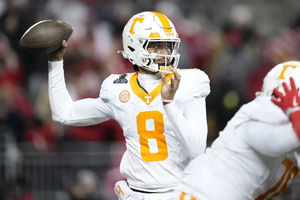How Branch Rickey Invented Modern Baseball
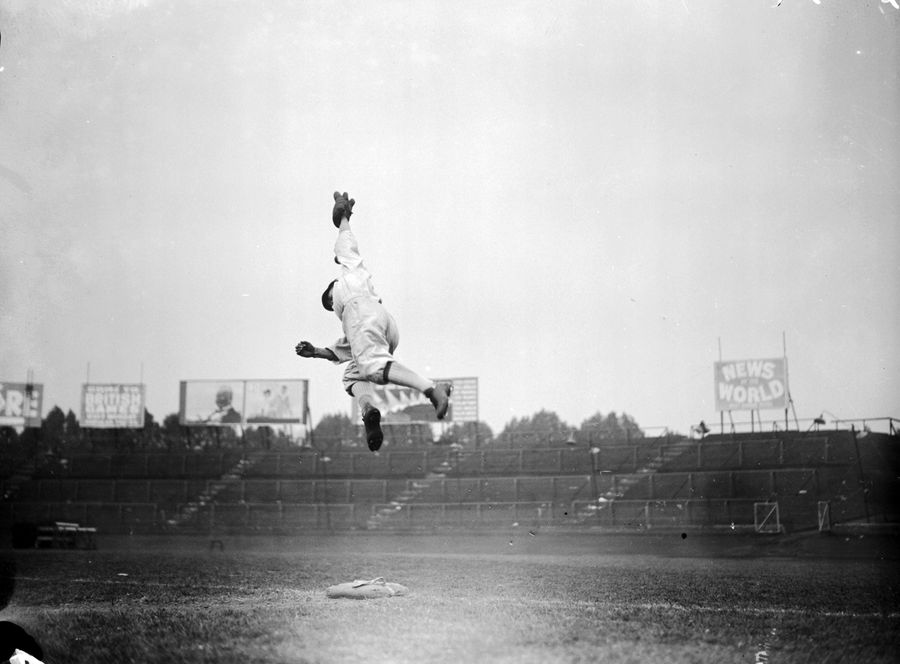
Excerpted from Dollar Sign on the Muscle, named by Sports Illustrated one of the top 100 sports books of all time; postscript by Sam Miller. You can read more about the new Baseball Prospectus edition of the book here, or buy it in paperback or as an e-book.
By the 1920s ivory hunter was a familiar sportswriting synonym for scout, and it conveyed the essence of the job in the era between the wars. With the advent of farm systems, scouts had begun to look more for amateur than minor-league talent. They explored the deep interior of American baseball—sandlot teams and town teams and mill teams—searching, as the saying went, for "an arm behind the barn."
These were scouting's most wide-open decades, the days of hard drivers and hard drinkers, when physical stamina was the key to the job. The key to third-era scouting would be salesmanship, but second-era players were relatively easy to sign. The trick was to find them. A scout's competitors were tough but not numerous: there were still fewer than two dozen full timers in 1940 when a group of younger men (Hugh Alexander, Jocko Collins, Tony Lucadello, Ed Katalinas) were coming into the game. This meant that significant bonuses were usually unnecessary. It also meant that any one scout had to cover enormous territory. When Charlie Barrett died in 1939, one of his obituaries included this note: "In hunting ivory he traveled nearly a million miles, by railroad, bus, airplane, automobile, and even tractor, from Cuba to Canada and from California to New York."
Charlie Barrett began as a part-time scout with the St. Louis Browns. He became a full-timer with the Cardinals in 1918, when Branch Rickey took over as president, general manager, and field manager. Barrett, Rickey said, "could assay the gold content in a handful of ore." Moreover, Barrett understood Rickey's master plan and was more responsible than anyone for its masterly execution.
When Rickey himself had worked for the Browns, from 1913 to 1917, he experimented briefly with the idea of a farm system—direct control of minor-league teams by the major-league parent organization, creating a production line of talent. The farm system was a strategy for saving money: instead of bidding against other major-league teams for minor-league players, Rickey wanted to grow his own. After World War I, when the minors were in a financial slump, Rickey put his strategy into effect. In 1919 the Cardinals acquired controlling interest in teams at Houston and Fort Smith; by 1939 the Cardinal empire included 32 minor-league teams and about 650 players.
The Cardinals bought pitcher Jess Haines in 1920, and then purchased no more players until 1945. The system did save money. But it made money, too. Rickey was able to generate such a steady supply of young talent that he could sell off the excess at a nice profit, while providing the Cardinals with enough manpower to win nine pennants by 1946. The competition among so many young players in the system operated as a kind of natural selection, and it kept constant pressure on the veterans at the top. Rickey, as Enos Slaughter once said, "would go into the vault to get you a nickel change." He was able to bully and bluff major-leaguers, bound by the reserve clause, into absurd salaries. The minor-leaguers could be left on the farms until, as Rickey liked to say, they "ripened into money."
Rickey's fundamental principle, "quality out of quantity," had direct implications for scouting. Since the Cardinals would be signing droves of amateurs instead of buying a few polished minor-leaguers, Barrett and Rickey needed to project players further into the future. Scouting would now require a clear analysis of a youngster's total athletic talents, his "tools." For the Cardinals the most important tool, even in the new age of home runs, was running speed: Rickey called it the only common denominator of offense and defense, and he believed it to be the best single indicator of major-league potential. The least important tool was fielding: "We can teach them to field," Barrett said. In fact, the system depended on teaching. In his larger vision of "player development," Rickey applied scouting insights to teaching and vice versa, and he winnowed prospects by erecting some hypotheses into laws: "The overstriding hitter cannot be corrected."
The principle of quality out of quantity also led Rickey and Barrett to devise tryout camps (they ran baseball's first ever in 1919, at Robison Field in St. Louis) and to hire more scouts: Pop Kelchner, Jack Ryan, Joe Mathes, Carl Lundgren, Fred Hunter, and Rickey's brother Frank. It remains unclear just how many of these were full-timers. Their salaries were so low that some of them may have been unsure about it, too, and Ryan continued to work for Rickey even after the Cardinals cut him from the payroll. Frank Rickey was his brother's right hand: when Branch was asked to write a letter of recommendation for him in 1942, he simply drew up a list of "Frank's players"—77 names in all, including Enos Slaughter, Marty Marion, and Preacher Roe—and noted that the Cardinals had sold off twenty-five of them for $428,500 in cash and fourteen new players.
The New York Yankees, even without a farm system, began to invest in scouting after the war by hiring Bob Connery and Paul Krichell. Connery had made his reputation in 1915 when he discovered Rogers Hornsby in the low minors and talked the Cardinals into buying the 18-year-old shortstop for $600; Hornsby was in the majors by the end of that season. Krichell, like Rickey, was a former catcher, sturdy and bowlegged. Lefty Gomez once remarked: "Paul would be seven feet tall if it wasn't for the two-foot bend in his legs." In the spring of 1922 Krichell attended a college game in New York and watched the Columbia pitcher, Lou Gehrig, hit a ball over the right field fence, across the street, and onto the steps of the library. When Connery heard Krichell's report on "the new Babe Ruth," he immediately offered Gehrig's coach, Andy Coakley, $500 to talk his player into quitting school and signing a Yankee contract.
Over the next 35 years Krichell signed two hundred more prospects for the Yankees, and among them were Red Rolfe, Charlie Keller, Phil Rizzuto, and Whitey Ford. But that flash of recognition at the Columbia game remained the peak experience of his scouting career. "I knew then," he said, "that I'd never have another moment like it the rest of my life."
In 1929 the Yankees decided to build their own farm system, and George Weiss soon made it a rival empire to the Cardinals'. Weiss, according to Rickey, "couldn't tell a bull from a cow" when it came to judging players, but he could judge scouts well enough to hire aggressive ivory hunters like Joe Devine, Bill Essick, Gene McCann, and Johnny Nee. Devine was known as "the human divining rod." With the Yankees from 1931 to 1951, Devine discovered Joe DiMaggio and twenty other future major-leaguers. In 1935, when DiMaggio was the property of the San Francisco Seals, most scouts lost interest in him after he injured his right knee. But Devine and Essick arranged for secret tests by an orthopedist, and on the basis of his report they negotiated DiMaggio's purchase for $25,000. More than most scouts, Devine studied a prospect's character—his personal habits, intelligence, and even diet. "I always talk to a prospect," he said, "to investigate his way of living. How much he eats is important too. How many fine-looking prospects have you seen hog their way back into the minors? If a player is absolutely dumb, I won't consider him unless his tremendous ability counterbalances his mental handicaps. Usually I pass up the moron ballplayer. He is outdated." By "outdated" Devine meant that the Yankees' farm system, like the Cardinals', was based on progressive methods of instruction and close working relationships between scouts and minor-league teachers.
From 1921 to 1945, all through his tenure as commissioner of baseball, Kenesaw Mountain Landis railed against the system that Rickey and Weiss perfected. "It is intolerable and un-American," he said, "when a group of ballplayers can be boxed into a minor league and advance only at the whim of their employer." Landis saw the farm system as a monopoly thwarting the upward mobility of minor-leaguers, and on several occasions he was able to construe baseball law so as to turn "chain-gang" players into free agents. Ironically, Landis more consistently penalized teams without farm systems, teams which directed the progress of their signees by means of illegal gentlemen's agreements with minor-league clubs. The most flagrant manipulator was Cy Slapnicka of the Cleveland Indians. According to sportswriter Gordon Cobbledick, "Slap spent so much time on Judge Landis's carpet as to be practically indistinguishable from the nap."
Like many other teams between the wars, the Indians were in effect still doing first-era scouting. Slapnicka became a scout in 1923, and for most of the next dozen years he constituted a one-man staff. Then, when he became the Indians' general manager in 1936, he began hiring scouts and showing them how to cut corners. He had once been a vaudeville juggler, and he could also juggle the contracts he issued to new prospects, leaving them undated or otherwise non-binding until the prospects proved themselves in the minors.
Slapnicka's gimmicks were illegal; Rickey's were merely manipulative. Rickey devised the "desk contract," for example, as a means of signing thousands of amateurs on a purely tentative basis. A player could be sent from one of Rickey's tryout camps to a minor-league outpost far away, there to be scouted at greater leisure—and perhaps to be released a few weeks later without money for transportation home. While exploiting players on a grander scale, Rickey maintained an air of piety that Slapnicka never affected, and a style of prose that occasionally tipped over into unintentional irony. "In a profession where the physical is dominant in the triune nature of man," Rickey wrote, "it would be surprising indeed if we did not find here and there an occasional scalawag."
By contrast, Slapnicka was a plainspoken Iowan—with at least one odd theory of judging major-league potential. In Jerome Holtzman's No Cheering in the Pressbox, Abe Kemp recalls the day that Slapnicka decided not to buy Lefty Gomez from the San Francisco Seals. Slapnicka told Kemp: "I saw Gomez undressed in the clubhouse, and anybody who's got a prick as big as he's got can't pitch winning ball in the major leagues."
Slapnicka was eloquent, though, when describing a 16-year-old pitcher he saw in 1935: "He was pitching on a semipro diamond on the outskirts of Des Moines. I watched a couple of pitches from the first-base line, and I got the funny feeling that this was something extra. So I moved over behind the backstop and sat down on a car bumper. It must have been a hell of an uncomfortable seat, but I never noticed. All I knew was that there was a kid I had to get. I didn't know then that he was smart and that he had the heart of a lion, but I knew I was looking at an arm the like of which you see only once in a lifetime."
In signing Bob Feller, a farmboy from Van Meter, Iowa, Slapnicka realized the ivory hunter's ultimate dream. He had found the arm behind the barn.
Postscript
There's a bit of scouting in good journalism. Unless a writer is content to transcribe press conferences or stream along behind the league's marketing men, unless he's happy to write what everybody else is writing with just a slightly cleverer lead, he must himself drive hours off the main roads to find the great and undiscovered. Once there, he must identify, project, persuade, and he must know his stuff. Darned right there's gut involved.
In the mid-1970s, Kevin Kerrane, an English professor at the University of Delaware, convened a lecture series on baseball in American life. A Phillies scout showed up for the series, Kerrane befriended him, and five years later Kerrane had talked his way into the Phillies' draft room and onto the back fields of its spring training grounds. The same year Kerrane was doing his reporting, Sports Illustrated "discovered" Bill James, and the seeds were planted for the scouts vs. stats wars of the 1990s and 2000s. Anybody who read the results of Kerrane's reporting, though, anybody who really knew scouting, would have seen the overlap. Scouting was all about data, if a different kind of data: data about sprint times and arm strength, and about race and faces and how big the mother's ass was. Some of that data was probably terrible! But scouting departments were where baseball teams experimented, pushed for ever more precise knowledge, and tried to squeeze out market inefficiencies before their competitors had caught up. Dollar Sign on the Muscle was Blink before Blink, and it was Moneyball before Moneyball, and it was Baseball America before Baseball America. It's not just one of the greatest narrative works about baseball; it's several, per chapter.
"They use 'inside baseball' as a term to suggest esoteric knowledge," writes David Simon, the creator of The Wire, in praise of the book. "That's ridiculous. The inside is where anything worth knowing actually begins to matter."
—Sam Miller
Related
Ranking the Most Slept-On Busts in NFL Draft History
2025 NFL Draft: A Class Headlined by Boom-or-Bust Players
A Geography Lesson Could Save the NBA Playoffs
NFL Draft 2025: Three Big Surprises You Won't See Coming
- Best NBA Playoffs Bets for April 23: Wednesday Picks, Predictions & Player Props
- MLB Over/Under Best Bet: Colorado Rockies vs. Kansas City Royals, April 22
- Tuesday NBA Playoff Picks: Top Bets and Parlays for April 22
- MLB Over/Under Best Bet: Cincinnati Reds vs. Miami Marlins, April 21
- Stanley Cup Playoffs 2025: Players Facing the Most Pressure in the NHL Playoffs
- Miami Heat vs. Cleveland Cavaliers Game 1 Best Bets, Player Props
- MLB Over/Under Best Bet: Cleveland Guardians vs. Pittsburgh Pirates, April 20



